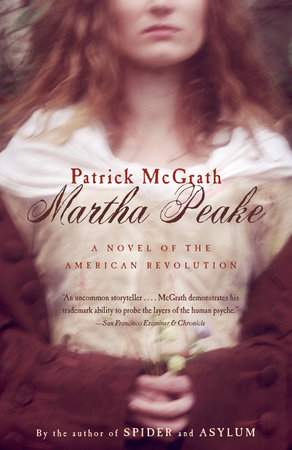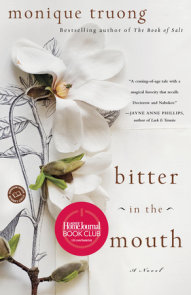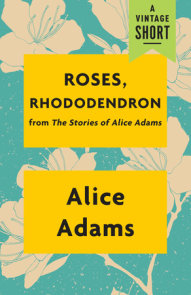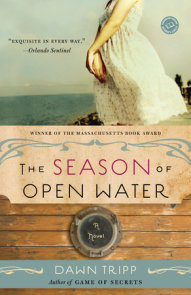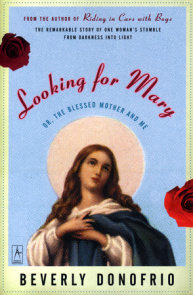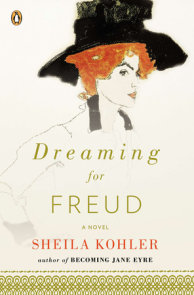READERS GUIDE
“An uncommon storyteller. . . . McGrath demonstrates his trademark ability to probe the layers of the human psyche.” —San Francisco Examiner & ChronicleThe introduction, discussion questions, suggestions for further reading, and author biography that follow are designed to enhance your reading group’s exploration of Patrick McGrath’s Martha Peake, a gripping novel set in England and America during the tumultuous years leading up to the American Revolution. The story of a spirited young girl and her tragically flawed father, Martha Peake unfolds in a narrative that brilliantly re-creates the ominous atmosphere of a traditional Gothic tale.
Introduction
Summoned to the gloomy, decaying Drogo Hall by his dying uncle, William, Ambrose Tree listens to William’s disjointed tale of Harry Peake, a poet and performer known as the “Cripplegate Monster.” Harry, his back broken in a fire that took the life of his beloved wife, fled his native Cornwall with his eight-year-old daughter, Martha. In London’s seedier pubs and taverns, he ekes out a living for himself and Martha by displaying his grotesquely deformed body and reciting his poetic masterpiece, a fiery ballad about the tyranny of the English king and the cry for freedom arising in the American colonies. Harry’s fame attracts the attention of William’s employer, the celebrated anatomist Lord Drogo, and Harry reluctantly agrees to let the doctor study his spine in return for a bit of extra spending money. The examinations stir up old feelings of shame and humiliation, sending Harry spiraling out of control. Drunk on gin after years of abstinence, he commits an unforgivable act and destroys the one thing that had always sustained him—the devotion of his daughter. With William’s help, Martha escapes from England and the terrors it holds to make a new life for herself in America. The year is 1774 and in the small New England village where Martha is welcomed into her uncle’s family, revolutionary fever is reaching a boiling point. Martha embraces the spirit of rebellion her father captured with such passion in his poetry, but it is the darker side of her father’s legacy that compels Martha to make the fateful choice between her own desires and the cause of the Revolution.With consummate skill, Patrick McGrath brings to life the squalor and depravity of eighteenth-century London and the hardships and hopes that drove the American colonists to fight for their freedom, weaving history, philosophy, and politics into a captivating family drama. Rich in breathtaking adventure and psychological suspense, Martha Peake is a haunting portrait of human frailty, courage, and redemption.
Questions and Topics for Discussion
1. Martha Peake is constructed as a story within a story, presented by a narrator who weaves his own imaginings into a tale told by his uncle. How does this narrative device influence the reader’s impressions of the characters and the facts of the story as they unfold? Did you find yourself accepting Ambrose Tree’s interpretations of events, even though he openly acknowledges his use of conjecture to fill in the gaps in his uncle’s narrative?
2. William describes Harry as “one of those cursed few to whom Nature in her folly gave the soul of a smuggler, and the tongue of a poet” [p. 6]. How does Harry’s childhood contribute to his divided nature? Are both elements of his character essential to his survival in London?
3. Harry sees showing off his backbone as “a spiritual labour, a kind of penance. To humiliate himself before the crowd was to invite the contempt and disgust he felt he deserved. For he wanted to cauterize his soul” [p. 37]. Does his decision to write poetry show that he is ready to move on with his life? What motivates him to recite his poem to an audience?
4. How do the themes of the “Ballad of Joseph Tresilian”—at once “a story of tyranny” and “a vision of untamed Nature” [p. 51]—reflect Harry’s personal struggles? Is Harry, trapped by his physical condition and tormented by his moral failings, symbolic of England at the time? At the same time, how does he also embody the spirit of the American colonists and their outrage against the tyranny of the king?
5. Do the encounters between Harry and Lord Drogo support Ambrose’s theory that the doctor’s intentions are sinister? What do they reveal about English society in the eighteenth century and the values that shaped it? How does Ambrose’s description of Harry’s appearance in Lord Drogo’s Theatre of Anatomy [p. 75] reflect his own bias, as well as the prevailing sensibilities of his time?
6. The world still knew him for a monster. However fresh the springs of the spirit within him, this could not be overcome, for this, his body, in the eyes of the world was his nature; and glimpsing this, in his bitterness, and spite, he had jettisoned his humanity and embraced the monster” [p. 85]. Is this an adequate explanation of Harry’s deterioration? Is Harry’s outward appearance a mirror of his corruption or the cause of his decline?
7. What qualities does Martha display, even as a young child, that foreshadow her future role in America? In what ways does the relationship between her and her father symbolize the relationship between the colonies and England? What political message is at the heart of the final, violent scene between Harry and Martha [p. 145]?
8. How do you feel about Martha’s decision to marry Adam Rind? Is her deception justifiable? How do you think Adam and his father, Silas, would have reacted had Martha told them the truth about her situation when she first arrived?
9. After her baby is born Martha remarks, “None of the women had asked to hold him, but the Rind girls were eager to . . . Martha wondered why the women had behaved so strangely. Did they think the child bewitched?” [p. 292] Are children in general more willing to accept the unusual than adults are, and if so, why? What insight does the novel offer into why people are uncomfortable with those who are disabled or otherwise different?
10. In what ways does little Harry’s deformed back symbolize the challenges facing the new nation of America? How do the various reactions to Harry’s birth—from Martha’s own feelings to those of the family and neighbors—embody the philosophical and political differences between America and England?
11. In response to the rumors that Martha spied for the British, Silas Rind “put his considerable authority behind an effort to promote a different version of the story, one in which Martha played not the traitor but the patriot; and no ordinary patriot at that. Martha Peake, he made it known, was a heroine, and a martyr to the cause” [p. 330]. Do you agree with his actions? Is it legitimate to mislead people in order to further a cause?
12. The British officer, Giles Hawkins, also uses Martha in pursuit of political and military ends, lying about her father in order to get information about American preparations for battle [p. 257]. Is there a moral difference between Silas’s creation of a myth and Hawkins’s more direct trickery?
13. From Harry’s career as a smuggler to Martha’s role in the Revolutionary War, Martha Peake is filled with evasion, secrecy, and deception. How does the way the story is presented echo and/or enhance these elements?
14. Does the ending surprise you? Like his uncle, Ambrose withholds information over the course of the narrative. What examples are there of his deliberately obscuring facts about Harry and his relationship to the denizens of Drogo Hall? In what ways does Ambrose’s nightmarish experience in the cellar [p. 312] serve as a metaphor for his role as storyteller? How does the ultimate revelation about Harry’s fate relate to the opening line of the book: “It is a black art, the writing of a history, is it not?”
15. Are McGrath’s portraits of Harry and Martha equally effective? Does one character hold your attention or engage your sympathy more fully than the other? Would you describe Harry as an evil, immoral person, or does he evoke compassion? What flaws, if any, does Martha exhibit? What do you admire most about her?
16. The first half of Martha Peake takes place in London, and during her stay in America Martha witnesses only the early days of the Revolutionary War. Do you think the book’s subtitle—“A Novel of the American Revolution”—is appropriate? What might have been McGrath’s reasons for selecting it?
17. Does the book deepen your understanding of the causes of the Revolution? In addition to his vivid description of the setting, how does McGrath illuminate the historical realities and the cultural and intellectual atmosphere of the times? Are there any historical omissions made by the author?
18. What does a historical novel provide which is missing from works of history or biography? What does McGrath achieve by presenting the Peakes’ story in the guise of a dark and at times melodramatic Gothic novel rather than as a straight narrative, a diary, or another traditional form of historical fiction? What specific characteristics of a Gothic novel make it an especially suitable medium for historical fiction?
19. The technique of framing a narrative was common in nineteenth-century literature, used for example, in Mary Shelley’s Frankenstein (1817) and Emily Brontë’s Wuthering Heights (1847). In what other ways does the novel evoke the literary conventions of nineteenth-century fiction?
20. If you have read the novels of Charles Dickens, discuss the stylistic and thematic parallels between Martha Peake and books such as Oliver Twist, Great Expectations, and Bleak House. As a modern novelist, McGrath is much farther removed from the events in Harry and Martha’s lives and from the narrator’s own time than Dickens was. How does McGrath’s contemporary point of view influence the way he portrays both characters and events?







